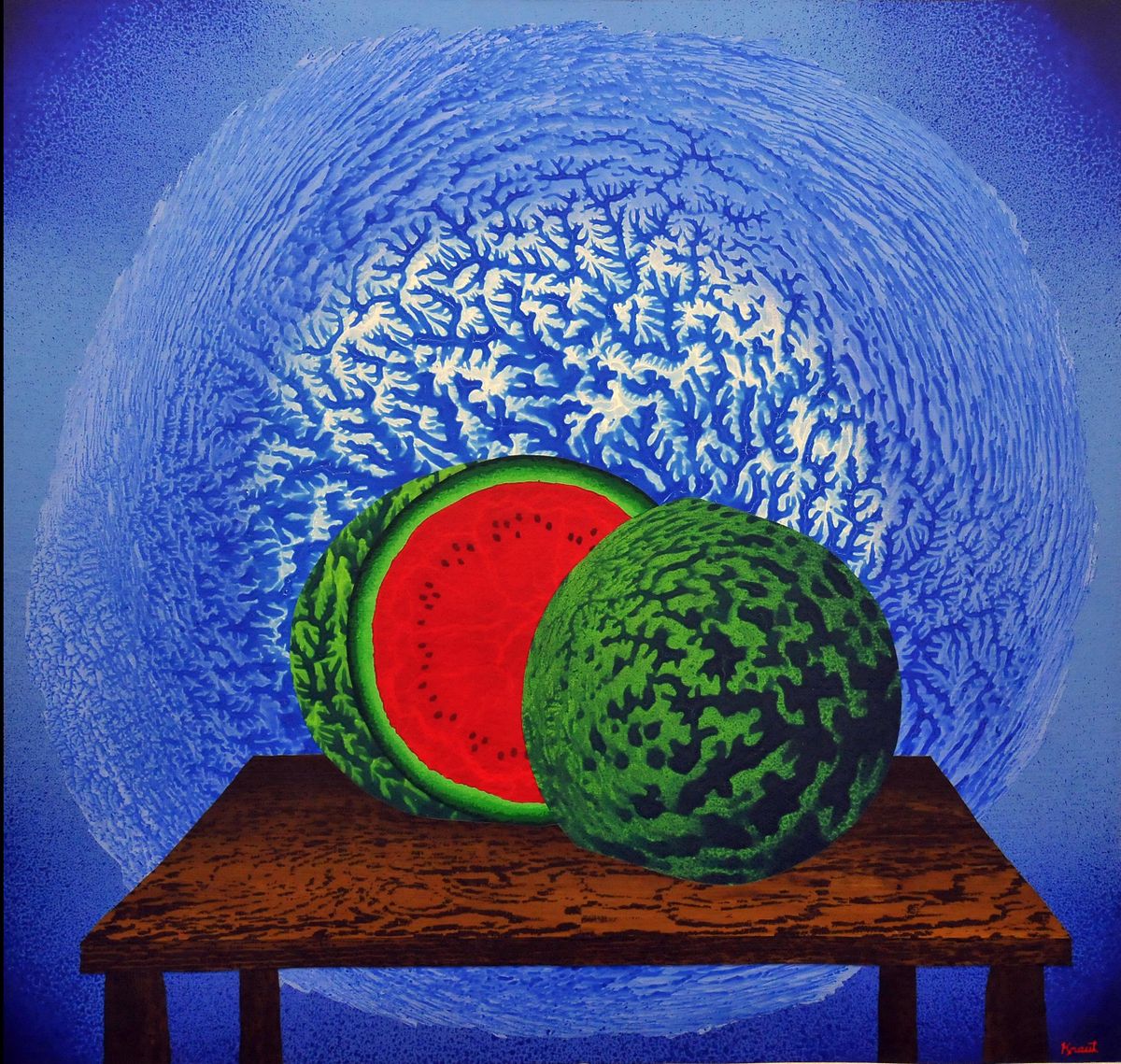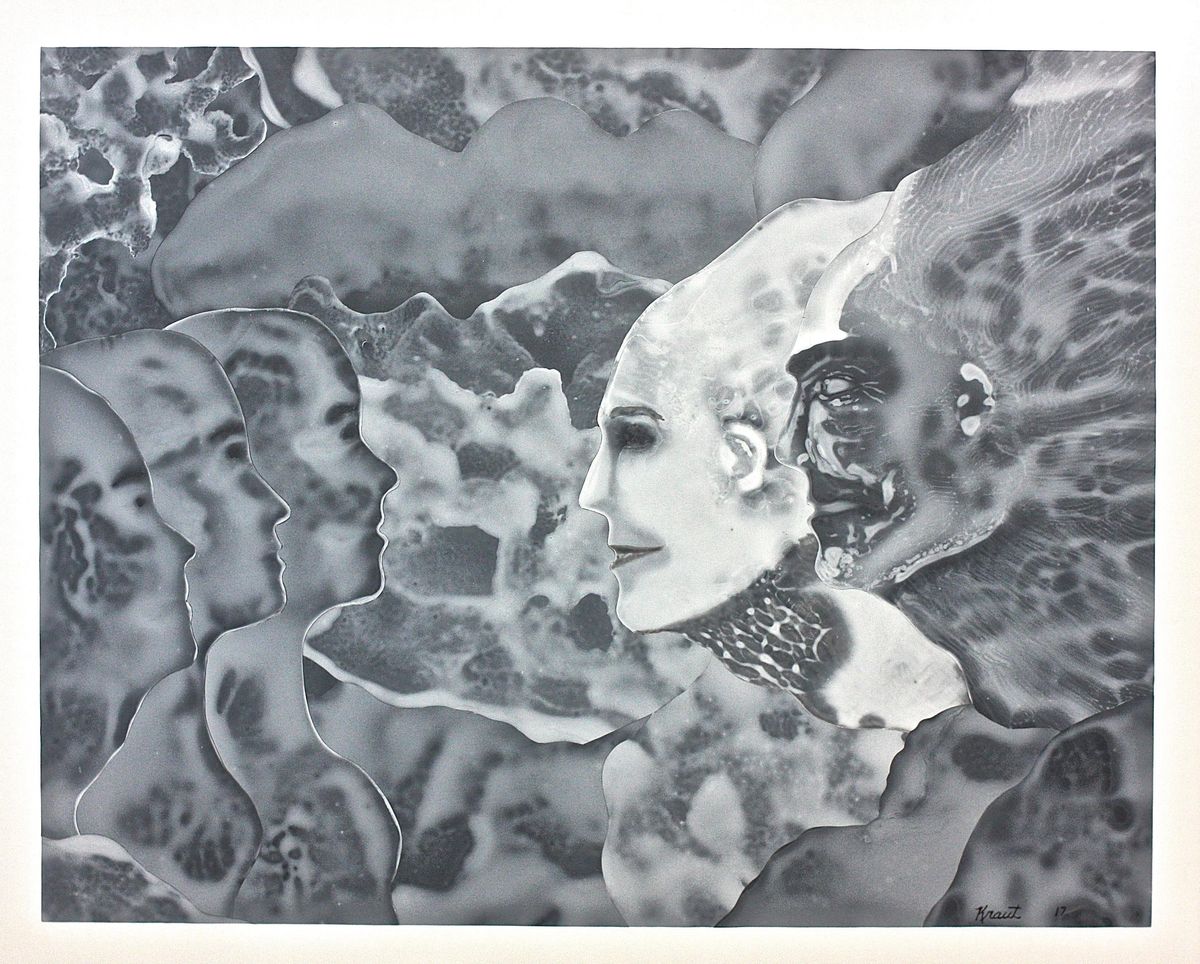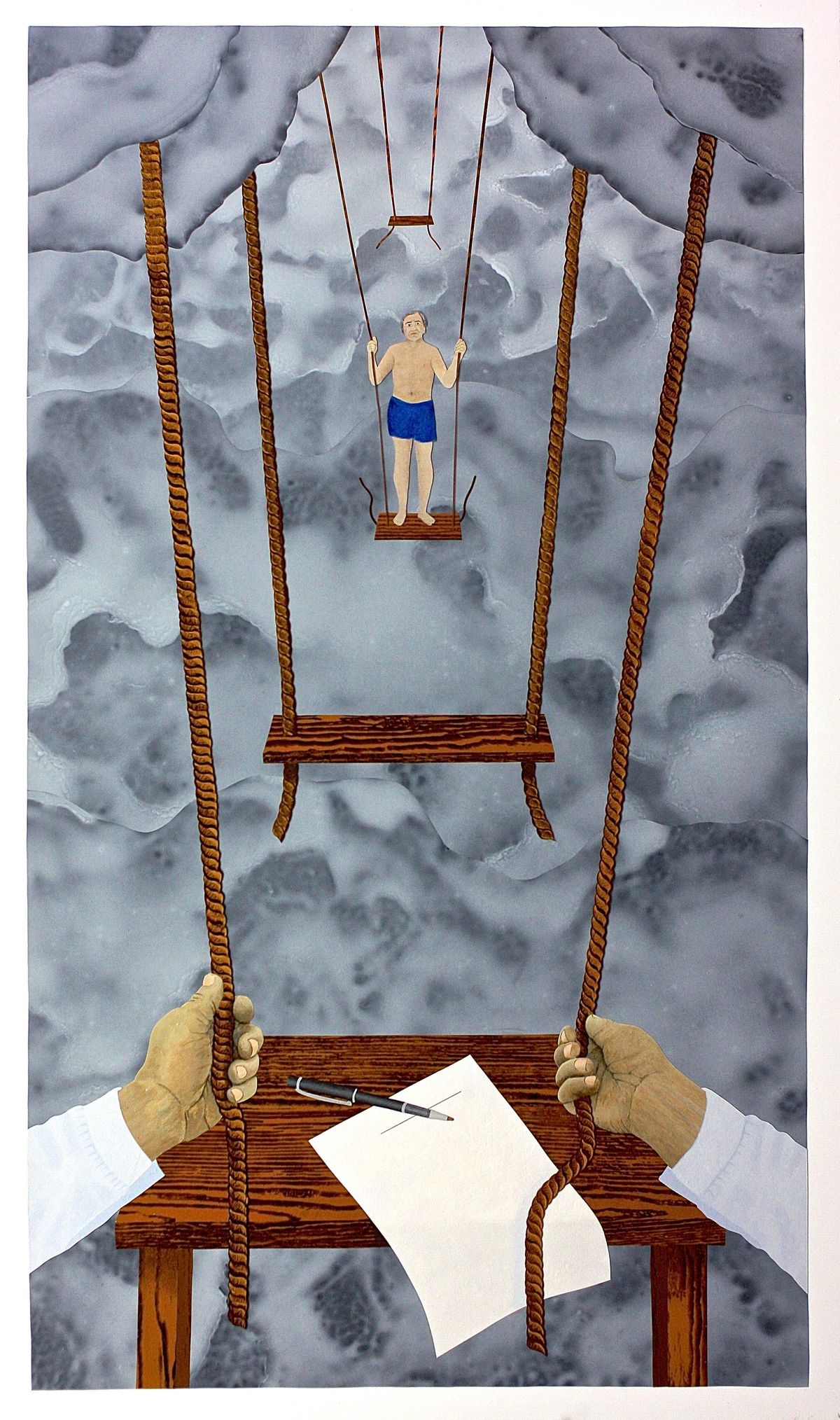For Spokane artist Robert Kraut, it’s time to be a little revolting
“Grand Cumulus” by Bob Kruat is part of the artist’s “Revolting Developments” exhibit in April at the Kolva-Sullivan Gallery.
Robert Kraut is tired of “pretty” art. The innovative Spokane painter, who pioneered a colorful painting technique he coined as “paintskins” in 1981, is in a revolt against himself.
Kraut says he is rebelling against producing any more of the vivid worlds and lush plant forms for which he has gained a following over the past three decades. With his upcoming exhibit, “Revolting Developments,” Kraut has thrown everything “decorative” or “pretty” about his signature painting style out the window.
“This has been really a kind of a revolt on my part, in relationship to myself and to the environment that we’re in,” Kraut said. “This work is all about content, eliminating all aspects of decorative art.”
Some may find Kraut’s artistic rebellion jarring when his show opens this First Friday, at the Kolva-Sullivan Gallery. Kraut said he looks forward to discussing with attendees at the evening’s reception a central question: “What is art? What constitutes good taste?”
One younger relative of Kraut’s has already expressed dismay with his decision to eliminate the decorative. “(The relative) said, ‘He’s ruining his career, everything he’s worked for!’” Kraut said with a chuckle.
Kraut’s wife Linda, who overheard the original criticism, rolled her eyes. “What can you say?” she said. “You can’t give somebody a whole arts education in just five minutes.”
Since Kraut won Best of Show in 1976 at the 28th Annual Spokane Arts Competition, he has never stopped making art. The Shadle High School graduate earned his master’s of fine arts at Eastern Washington University and later taught printmaking there as an assistant professor before moving to New York in 1977. He established himself on the East Coast through exhibitions and publications, and was granted Artist-In-Residence status by the New York City Department of Cultural Affairs in 1987. Since moving back to Spokane in 1994, Kraut has shown his exuberant and colorful paintings at local and regional museums and galleries.
At a recent visit to Kraut’s Northside studio, monochromatic paintings with harsh themes line the walls where whimsical worlds and bright flora used to hang. The energetic artist, who has always delved into deeper existential questions, still uses his “paintskins,” in which he paints images on glass, then peels them off and reverses them before mounting, smooth side up, often in layers.
What has also remained embedded in Kraut’s art, despite his recent dark turn, is his sense of humor. Paintings for “Revolting Developments” include a personal storyboard of some of the worst things in Kraut’s history, a scene of people jumping off a basalt rock cliff, a flying drone invading a naked woman’s privacy, a health worker inoculating against ebola, and even child abuse.
“I got to a point where I asked myself: ‘Just how far can I go with this, and what is the sickest thing I can thing of doing?’” Kraut said.
Nothing is pretty, or sacred, in “Revolting Developments.” Nostalgic art celebrating the history of Spokane is a common target of ridicule. Several paintings poke holes at the notion that harking back to the past is even a worthy endeavor. Kraut skewers the metal sculpture of the Native American spear-fisher currently on display at the Division Street exit of Interstate 90 downtown, depicting the figure thrusting his weapon into the head of a panhandler.
“The whole idea of the sculpture was to stop panhandlers from panhandling cars.” Kraut said. “There’s not even any water around there. He’s fishing in dry rocks.”
“Why would we pay an artist living in 2015 to depict something that happened over a hundred years ago, just to appease society’s aesthetics?” Kraut said. “I just think Spokane can produce more progressive art than this nostalgia. Something hopeful about the future.”
“One hundred years from now, someone is going to decide Spokane should depict Expo ‘74, and we’ll have hippies and flower children at the overpasses,” Kraut said. “Nostalgia is not public art. It belongs in the historical society.”
Kraut has taken his artistic protest to the streets. Or rather to the falls. A few weeks ago he erected his own temporary public art piece: he had himself photographed in the middle of the pedestrian footbridge spanning the Spokane River, while dangling a larger-than-life mobile of human figures. The figures appear to be hanging on, trying not to fall in the deadly waters.
The photographs he will display at the show represents Kraut’s own attempts to “hang on,” in spite of the hardships and disappointments of daily life.
Another painting in the exhibit shows a man being pulled down and drowned in a swirling whirlpool of the letters spelling “SPOKANE.”
Kraut said his recent despondency is partially because he is simply facing the same issues most older Americans have had to confront: caring for aging parents with dementia, and dealing with his own mortality and deferred dreams. The fact that he had to return to Spokane more than 20 years ago, after 18 years living in New York as an established artist, still rankles. “I had to walk away,” Kraut said.
But throughout the years, Kraut has never stopped making art and showing his works at local galleries. The same forward-thinking and hopefulness he wants for Spokane is what he seeks for himself. It’s what drives him.
“I feel like I’m at the end of something, and the future for me is a good spot because I don’t know what’s there,” Kraut said. “If I can get lost, it means it’s just a matter of time before I’ll be fully immersed in something again.”




